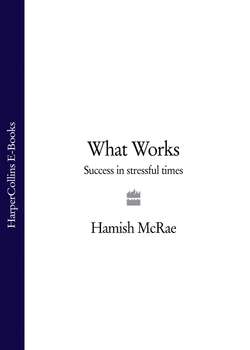Читать книгу What Works: Success in Stressful Times - Hamish McRae - Страница 20
2. WHAT ARE THE LESSONS?
ОглавлениеThe first conclusion is that it is possible, over time, to make radical improvements in the quality of life of a city by looking at the space between buildings rather than the buildings themselves. Unsurprisingly, what has happened in Copenhagen is studied by urban planners the world over. Gehl Architects has been commissioned by many other organizations, including Transport for London and the Department of Transportation in New York, to see what part of that experience can be applied elsewhere.10
But all cities are different. They have different histories, a different balance of activities and differences in basic layout. Copenhagen itself has a number of unusual features, some of which have made things easier, some harder. For example, it has a medieval core,11 with a street pattern originally based on pedestrian traffic-plus perhaps some handcarts. It is largely a single-level city in the sense that there is no underground railway system, no underground shopping malls, no pedestrian footbridges. It has very few privately owned shopping arcades attracting people away from the streets and squares. It is also flat, making bicycles a much more attractive prospect than in hilly cities.
In a sense Copenhagen has been forced to use its street-level public spaces better-but it has also taken the opportunity to do so.
For lessons, though, it is best to start with the medieval core-even though few non-European cities have a similar central zone laid out hundreds of years ago. The most important lesson here is that where it is practicable to turn that core back into a place where people walk there are huge advantages in doing so. For any journey of less than about one kilometre, a little over half-a-mile, walking is the most efficient method of transport. It uses by far the least road space per person and, with the partial exception of using a bike, it is also probably the fastest way of getting about. For any journey taking up to ten minutes, most people are happiest as pedestrians.
But if they are to walk, while sharing the space with other traffic, the process has to be made pleasant. This requires great attention to detail. For example, there has to be enough space so people do not feel crowded and can move at a steady pace. When they cross a road, the lights have to be designed to give them priority, not other traffic. They must not be forced down steps into underground passages or up steps onto pedestrian bridges. So it is not enough to get rid of cars. Street furniture has to be improved, trees planted, pavements made attractive. Lots of design details, each small in themselves, have to mesh together.
Some of these changes can be made easily, but others imply radical rebuilding. For example, the slab-sided tall buildings that are the standard office block of the developed world can whip up vortex effects, increasing the winds at street level. That means it is much less pleasant for anybody walking and makes it impossible to create places where people will linger, such as outdoor cafés. But you cannot tear down every office block.
Copenhagen starts with the advantage of being largely on a single level and its old core is largely made up of four-and five-storey buildings. But it suffers from slab blocks outside the centre and not much can be done about that, except not to repeat those mistakes in the future. There is, however, the lesson that whenever new buildings are constructed, the designers and the planning authorities should consider their impact on the space in between.
That leads to a more general point about coping with weather. There are many ways in which cities in cold climates have sought to adapt, one being to offer people an alternative, as far as possible, to having to go out into the open. In Toronto there is a huge shopping-centre complex underground; in Minneapolis the central business area is linked by walkways one storey up. Copenhagen lacks such facilities. Instead, it has sought to turn the city into a place where people will use outdoor public space in winter as well as summer.
Basically this has been achieved through small details: outdoor cafés supply blankets for their guests and there are space heaters under large umbrellas. And the city is looking at other ideas: big entertainment screens that emit light on dark evenings; heated benches; skating rinks and so on. But the important change-and this applies to cities in all cold locations-is not to fight the winter but to celebrate it.
Perhaps the biggest lesson of all from Copenhagen is that city centres work best as places where a mixture of functions can flourish. They have long been centres of commerce as well as leisure and entertainment; but they also work better if they are residential centres too, particularly with young student populations.
The thing to avoid is letting any one function dominate or being too rigid when new projects are on the drawing board. The parts of Copenhagen that work least well are the planned blocks and streets of the 1960s; since then, the market has been allowed to signal what people want, not what planners think looks good on paper. To illustrate the point, far from being one of those pedestrianized areas that turn into urban wastelands after dark, Copenhagen’s centre is now home to around 7,000 residents-a development welcomed by local people who report that the atmosphere is both warmer and safer thanks to the thousands of city homes emitting light out onto the streets.12
The authorities have worked with the grain of demand to decide on the best use for the different parts of an ancient city. This has worked remarkably well.
•Make the process pleasant •Consider your impact •Allow a mixture of functions to flourish
